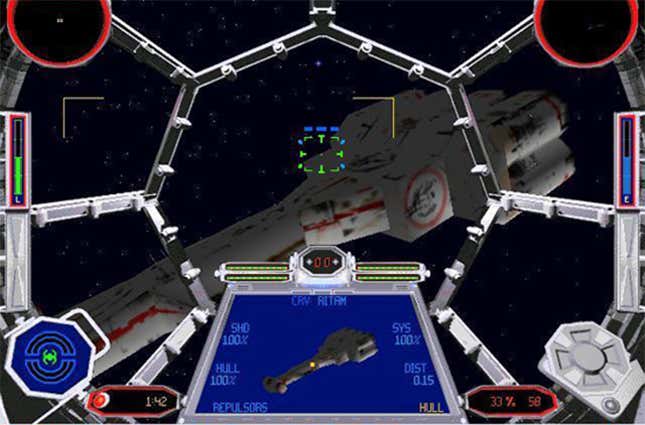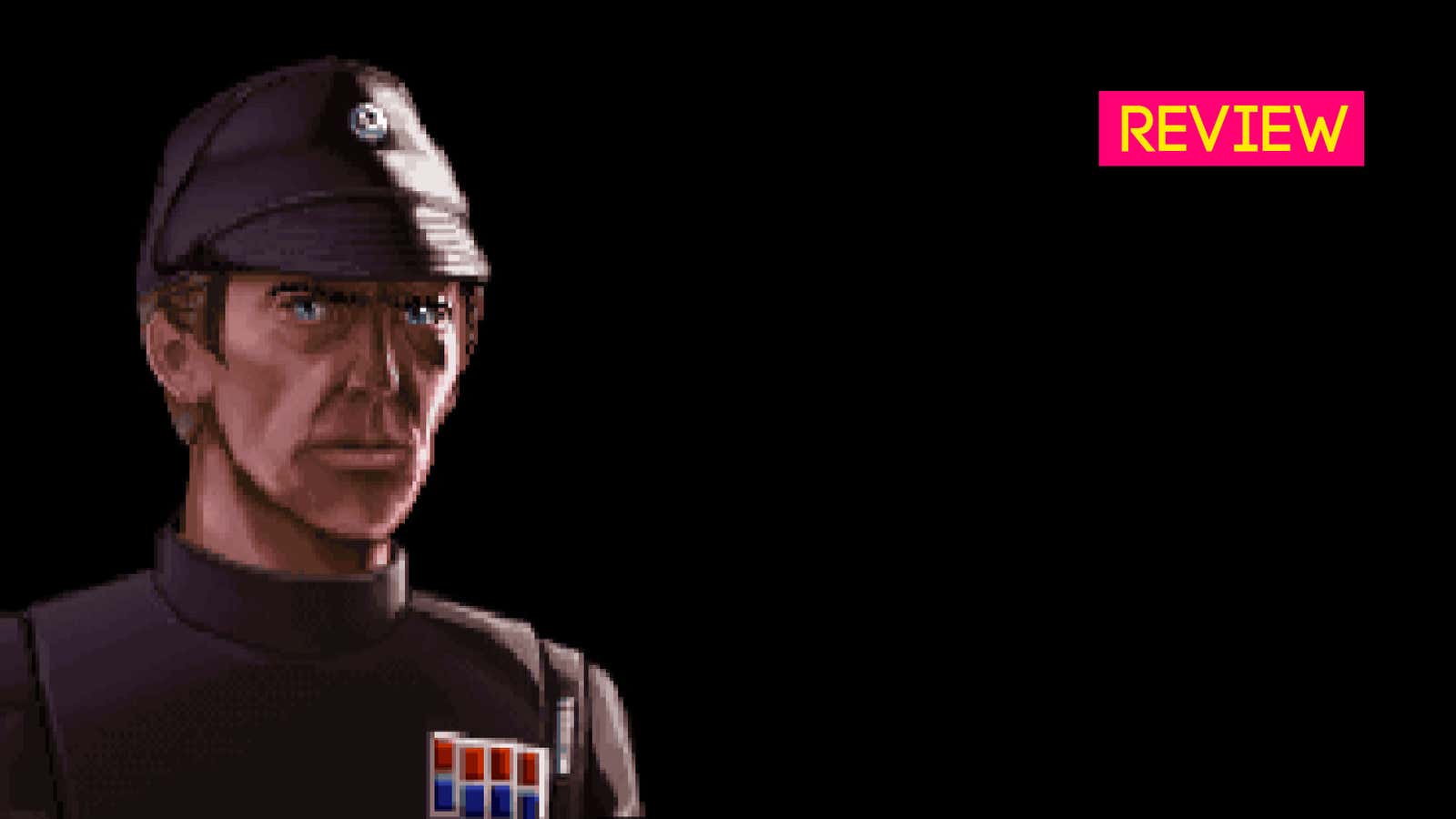As part of Backlog month, I wanted to reach deep into the collection and talk about one of the greatest video games of all time, one that nailed everything it set out to do so well that even 27 years later it remains as fun and relevant as it was when it first dropped.
Tie Fighter, first released in 1994, is a ruthless space shooter where large battlefields, sprawling engagements and shifting objectives mean victory has to be earned, and a moment’s indecision or slowness can cost you the entire game. But where in its predecessor X-Wing this design often felt punitive and unfair, in Tie Fighter you get the feeling LucasArts had learned from its mistakes, and that any failure - even if it came 28 minutes into a 30-minute mission (that didn’t have checkpoints) - was solely down to you.

Why? Because Tie Fighter, like X-Wing, wasn’t just about flying around and shooting things. At the heart of the experience across all the games in the series (there would be two more, the multiplayer X-Wing vs Tie Fighter and X-Wing Alliance) was one of the most effective mechanics in video game history: energy management.
Each ship you fly in the game has a finite amount of energy that can be distributed across its systems. You can assign a degree of it to your weapons (affecting how quickly your lasers recharge after firing), your shields (affecting how quickly, if at all, your shields regenerate after taking a hit) and your engines (affecting how fast your ship could move at top speed).
What makes it so important is that it’s a zero-sum game. Divert energy to your weapons and either your shields will suffer or your speed. So every situation you face in the game becomes more than just a test of reactions and shooting, it becomes strategy. Some fights will need more shields, others might need more firepower, the best (and most frantic) will usually require you to urgently switch between them as they ebb and flow.
In X-Wing, you had to juggle this and mission design that would often make success physically impossible. Tie Fighter is more generous with its demands of the player in this regard, meaning that when you fail - and you will fail, often - it’s just your fault. You could have gone faster, or fired more rounds, or defended yourself a little better. You had the tools at your fingertips to adjust your craft to the battle, you just must not have used them properly. Try a different approach next time, hot shot space pilot.
In most Star Wars games, you’re playing as the good guys. The Republic, the Rebels, doesn’t matter, the forces of evil are represented as an endless parade of cannon fodder. Outside of a major villain or two we never get to know the Empire or its countless personnel, they exist solely as obstacles in the way of our heroic journey.
Not in Tie Fighter. Playing as an Imperial pilot, you get to see the Empire at ground level, wandering its hallways, using its tech and meeting its officers as colleagues, not targets. This alters the tone of the entire game, not just outside of missions, but in them as well. In X-Wing, playing as a Rebel pilot, you’re constantly up against it, outnumbered, outgunned and on the run. In Tie Fighter, you’re the hunter, not the hunted, and that feeling of superiority and control makes many missions - especially at the beginning of the game - feel almost relaxing (though this is compensated for somewhat by the fragility of some Imperial craft compared to the bulkier Rebel ships).
Painted in movies as the ultimate bad guys, utterly irredeemable, in Tie Fighter you see that there are good people in the service of the Emperor, and the division between soldiers doing their duty and the truly evil men at the top is explored in the way Tie Fighter’s storyline evolves to include so much more than just hunting down Luke Skywalker and his friends.
It’s amazing how well this game holds up. Yes, the visuals can seem basic in this post-Squadrons world (the 1994 edition’s polygons are muddy and the 1998 edition has some icky menus), but in terms of how it handles, how the missions play out, it doesn’t feel - in the way 90s PC games often do - that you’re playing something sluggish, overly-complicated, obtuse or confusing.
You get dropped into a huge space battle, you fly around with smooth-as-butter controls, you make use of a dynamic but incredibly simple energy mechanic, you shoot some stuff, you move on. It is, for what the genre requires, almost everything it needed to be. It gave you enough systems to blow stuff up, not enough to confuse you, and then made the combat as fast and exciting as it needed to be.
I think that’s the reason, above all others (even the decline of the joystick), that the space combat genre went away. Why Wing Commander focused on presentation, not gameplay. Why Tie Fighter’s sequel, X-Wing Alliance, is never mentioned in the same breath. Why even Squadrons, with all its backing and hindsight, is more of an arena shooter than a true space sim.
Because Tie Fighter was pretty much perfect. It was everything a space shooter ever needed to be. And still is.
This review was originally published in 2014 but has been revised and updated for Backlog Month.
